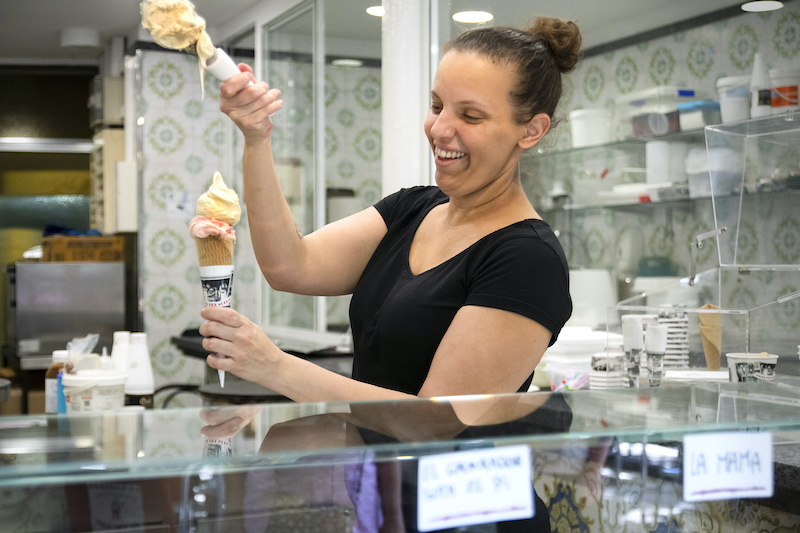We can't find the internet
Attempting to reconnect
Something went wrong!
Hang in there while we get back on track

Barcelona
Barcelona's culinary record
Barcelona today has a well-developed and strongly rooted Catalan culinary scene, something that wasn’t true a few decades back. In that sense, the reclamation of Catalan identity in the post-Franco era has not just been a political endeavor but also a culinary one.
Get the Full Story →
Get Your Free Barcelona Pocket Guide
Introducing our pocket-sized Barcelona guide — perfect for your next culinary adventure. Yours free when you sign up for our newsletter.
Get Your Free Barcelona Pocket Guide
Introducing our pocket-sized Barcelona guide — perfect for your next culinary adventure. Yours free when you sign up for our newsletter.
Visual Dispatches from the Frontlines of Local Eating
Barcelona Videos

Barcelona: An Eater’s Guide to the City
Part of Culinary Backstreets® “An Eater’s Guide to the City” series, this newly updated and expanded book was created with those who travel to eat in mind.
Visit the shopYour Questions, Answered
Barcelona is cradled on mainland Spain’s northeastern Mediterranean Coast, just a 2-hour drive south from the French Pyrenees, and it is the capital of Catalonia. It is Spain’s major Mediterranean port and commercial center famed for its architecture, art and Catalan cultural heritage.
Barcelona has a wide variety of tourist attractions such as La Sagrada Familia, the Gothic Quarter (Barri Gotic), Casa Batllo and Casa Milà, Park Güell and the long, wide beaches facing the Mediterranean Sea.
The best time of year to visit Barcelona is from earl May to early June. This is when temperatures are the most pleasant, in the low to mid-70s, and a number of activities and festivals kick off the start of summer. Summer itself can be hot and humid, with many folks who live in Barcelona preferring to leave.
The best area to stay in Barcelona for first time visitors is Barrio Gotico (the Gothic Quarter). This is the historical and geographical heart of the city, and one of the best places for lodging if you want to be close to all the important landmarks, attractions and activities – not to mention the tapas bars!
The average annual temperature in Barcelona is about 70 F during the day and just under 50 at night. In January, the coldest month, typically the temperature ranges from 54 to 64 during the day and 43 to 54 F at night.
Barcelona can be quite expensive to visit when coming from the United States, but it is not as expensive as other big European cities. There are many budget offerings that make it possible to visit and keep costs low. Like most big cities, Barcelona has quality food at low prices.
According to the “Safe Cities Index 2019” from the Economist Intelligence Unit (EIU), Barcelona was one of the safest cities in the world in terms of general crime, and overall ranked 19th in personal security and 26th in the world. Pickpocketing and petty theft are an issue, especially in tourist-heavy areas, so it is best to remain cautious.
Barcelona is a well-known destination for foodies. One of the most popular foods in Spain is paella, and here you can have some of the best paellas in the country. Gazpacho, patatas bravas, bombas, croquettes and churros other famous foods in Barcelona, but there is much more discover. You can check out our list of the 10 essential food stops in Barcelona.
Spain is about 86% fully vaccinated, and masks are not required except on public transportation.
American citizens can travel from the United States to Spain visa-free for up to 90-days, with proof of vaccination.
You can fly directly to Barcelona from many locations worldwide. Barcelona Airport is the second largest airport in Spain. It is an international airport. In total, there are 196 airports in 61 countries around the world that have direct flights to Barcelona.
It’s impossible to choose just one place to name the best restaurant in Barcelona! While you can get anything from up-scale to down-home, we recommended starting with our list of the 10 essential food stops in Barcelona.
Many of the city’s streets outlet onto Barceloneta Beach. This is the Miami Beach of Spain: crowded, boisterous and endlessly entertaining. It is safe to swim at Barcelona’s beaches. There are no dangerous currents and rarely big waves.
Barcelona is one of the most popular cities in Europe, and visiting it together with your kids can be a wonderful experience for the entire family! There is so much to do and see in Barcelona with kids, especially because it is such a safe and kid-friendly city.



































